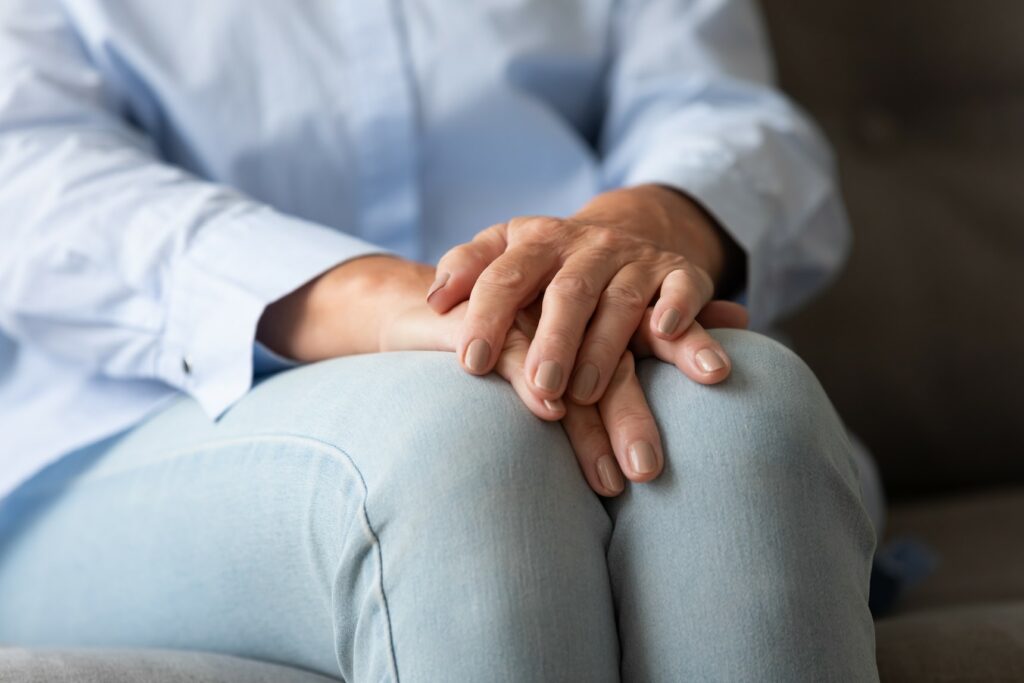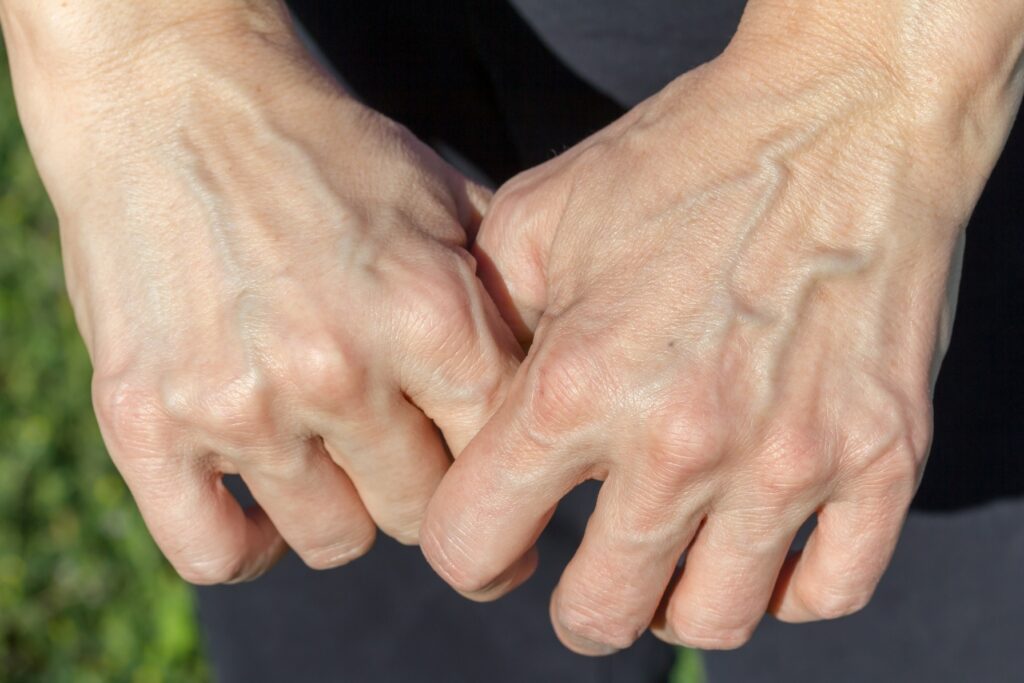While the legs are the first thing most of us think of when we hear the term “varicose veins”, the condition can and does affect blood vessels in other areas of the body. It’s not uncommon for males to experience varicose veins in the scrotum. This is called a varicocele.
The Male Anatomy – in a Nutshell
The scrotum is the loose pouch of skin that houses the testicles which make, store, and transmit sperm.
Sperm production, maturation, and function rely on a delicate balance in terms of environment, and the core body temperature is too high for this. To combat this, the testicles (testes) are gently held in the scrotum, which helps regulate their temperature outside the pelvic cavity a few degrees lower than inside the pelvis. In colder conditions, the scrotum naturally draws closer to the body, while in hot conditions, the scrotum hangs lower, holding the testes further away from the body cavity.
The majority of the hormone testosterone and sperm are generated in the testes and the sperm then mature in the epididymis, which is a coiled tube that lies behind each testicle. The sperm travel from here via the vas deferens through the prostate gland, where sperm mix with seminal fluid ready for ejaculation via the urethra.
Blood is delivered to each testicle via the testicular artery, and the veins inside the scrotum are called the pampiniform plexus. These veins exchange heat and help to cool the blood from the testicular artery before it can enter the testes.
What Are Varicoceles?
Varicoceles occur when the network of veins of the pampiniform plexus in the scrotum becomes enlarged or swollen. Rather than circulating properly (and efficiently) out of the scrotum and back to the heart, blood pools in these veins
Varicoceles are not uncommon, and as many as 10-15% of males have one. They usually form during puberty and develop, often worsening over time. They may rarely be bilateral (on both sides) but are much more common on the left side only – this is due to the anatomy being different between the left and right sides of the body in terms of how blood is returned to the heart.
Most varicoceles cause no symptoms – though there are some signs to be aware of:
- Discomfort, or a dull, aching heaviness or pain. Often this is alleviated by lying down.
- Dragging sensation.
- A mass or lump in the scrotum. This may be visible and can feel like a “bag of worms” and is easier to identify when standing up.
- Testicles are different sizes – noticeably so.
- Fertility issues.
**Any scrotal or testicular lump, bump, or mass needs to be promptly checked by your GP**
What Causes Varicoceles?
There is no way to prevent varicoceles from forming. There may be several causes of varicoceles, including:
- Genetics – more likely if a family member is similarly affected.
- Varicose veins in the legs increase the risk of having a varicocele.
- Missing or inadequate valves in the veins.
- Due to normal anatomy, the body requires more pressure to return blood to the heart from the left side.
- Swelling due to blood pooling or backflowing in the veins.
- Blocked blood flow due to swollen lymph nodes in the groin, pelvis, or abdomen.
- Very rarely, a tumour on the kidney may cause sudden, painful varicocele development.
Are Varicoceles a Problem?
For many men, a varicocele is harmless and causes no issues whatsoever.
Occasionally, however, it may cause pain or discomfort, and one testicle may grow more slowly in adolescent boys with a varicocele or shrink in an adult who develops one.
There are also fertility considerations. If a varicocele is present, the heat exchange between the testicular artery and the pampiniform plexus can be compromised. This can lead to testicular overheating and diminished sperm production in terms of number, quality, and function. Fertility issues may result – and up to 40% of men investigated for fertility problems are found to have a varicocele.
It\’s important to understand that 80% of men with a varicocele have no issues with fertility.
How are Varicoceles Diagnosed and Treated?
A self-examination of the scrotum or routine GP check-up can identify varicoceles. They typically look and feel like a “bag of worms”. The examination is usually performed while you are standing. An ultrasound of the scrotum may be recommended to determine the right (if any) treatment approach, especially in adolescent boys and young men.
Treatment is often not required at all, but will be offered or recommended in the presence of:
- Pain
- Fertility issue
Slow growth of the testicles (especially if the left is growing more slowly than the right testicle) - Shrinkage of a testicle
- Abnormal semen analysis
Treatment/Management options, where necessary, include:
- Painkiller medications (usually over-the-counter paracetamol or ibuprofen) may be beneficial for pain.
- Support the scrotum by wearing briefs rather than boxers. A jockstrap may alleviate discomfort. Lie on your back to help ease the pain and enable the varicocele to drain.
- Embolization is a non-surgical, minimally invasive approach to treating the issue. An interventional radiologist uses X-rays and injected contrast media to locate all the veins leading to the varicocele. These are then blocked with tiny coils (and potentially a sclerosant or dehydrating drug) to fully restrict blood flow to the varicocele. Access is via a tiny incision in the groin or neck and a light sedative and/or local anaesthetic is used.
- Day surgery may be carried out under general anaesthesia. Options include microscopic varicocelectomy (which ties off all the small veins in the scrotum but avoids impacting the testicular artery, vas deferens, and lymphatics) or a laparoscopic varicocelectomy (which ligates the veins via small cuts in the abdomen). Surgery carries some risks – of the varicocele remaining or recurring, or rarely, of damage to the testicular artery or fluid forming around the testicle.
A Urologist is the right professional to see if you have a varicocele. You will need to see your GP for a referral.
If you have a varicocele and are aged over 16 years, semen analysis is recommended to determine whether intervention is needed to preserve and maximise future fertility. Normal results indicate that repeat analysis every two-three years to ensure ongoing sperm quality is warranted.
Crows Nest Vein Clinic
Crows Nest Vein Clinic does not offer varicocele treatments.
We do, however, offer gold-standard minimally invasive treatments for varicose veins of the legs. Dr Nicole James offers world-class care using the most modern, effective treatment techniques for everything from spider veins to more advanced leg varicose veins.
Our Ultrasound Guided Sclerotherapy and Endovenous Laser Ablation treatments are walk-in, walk-out, and there is no hospital admission, general anaesthetic, or protracted recovery time.
There is no more effective, comfortable way to say goodbye to your varicose veins.
Call (02) 9906 1555 or email [email protected].




